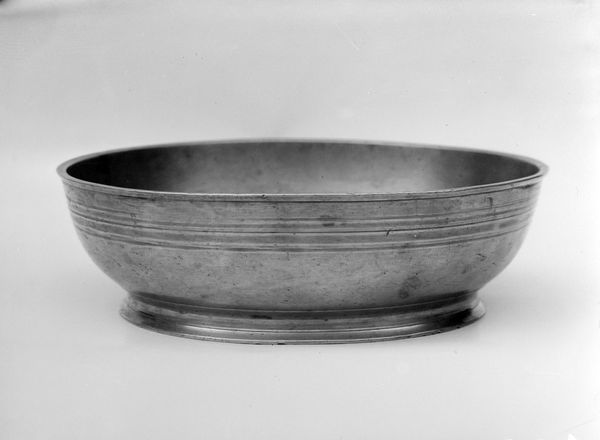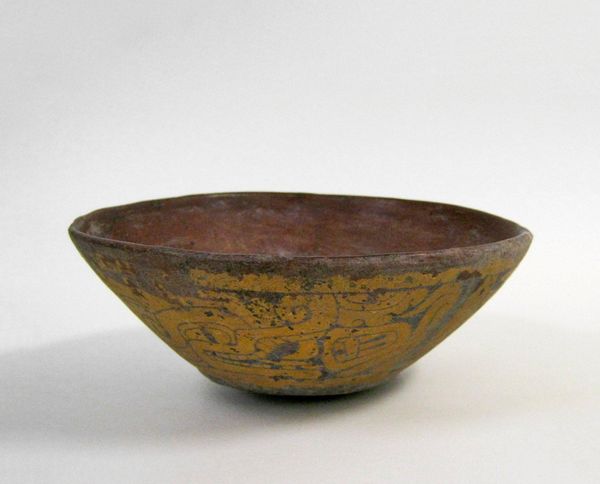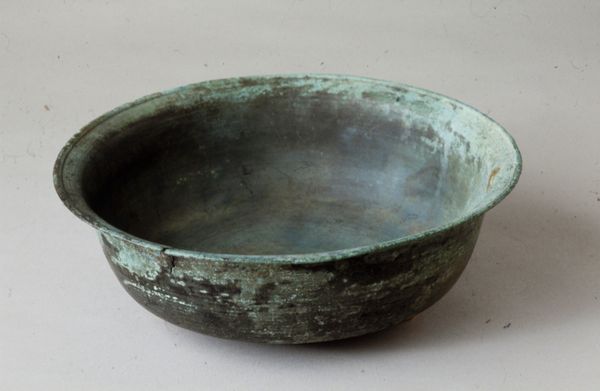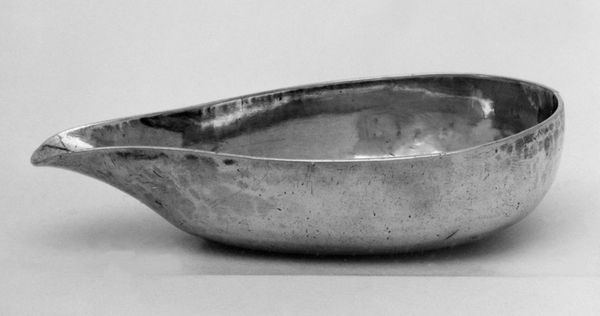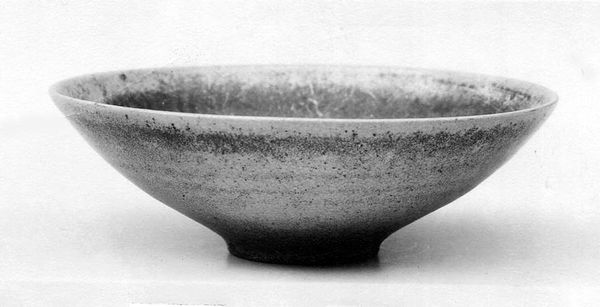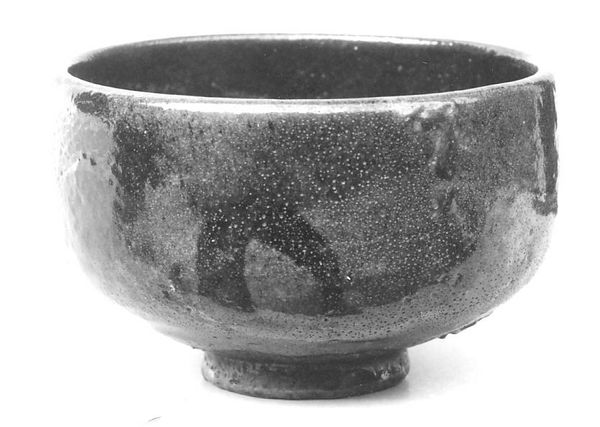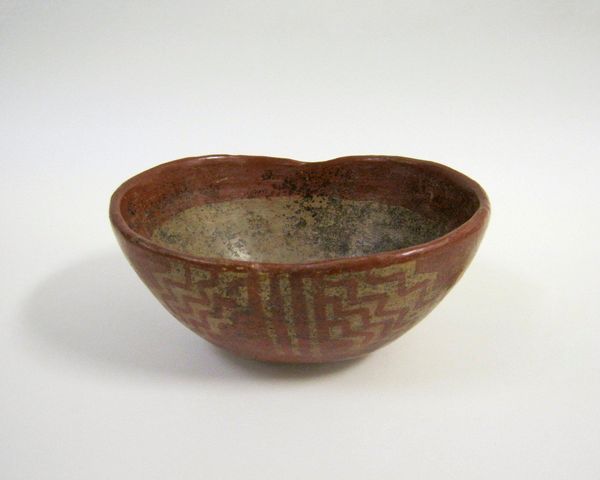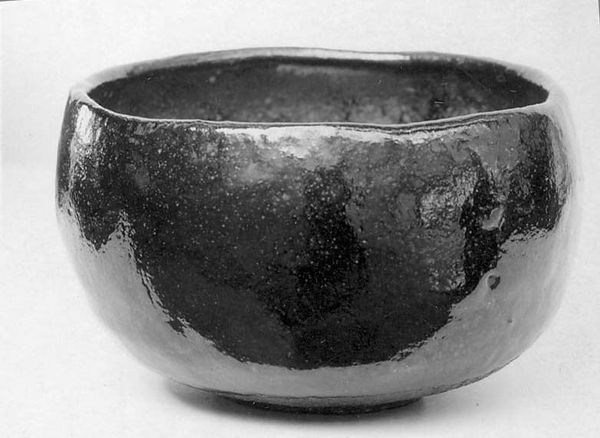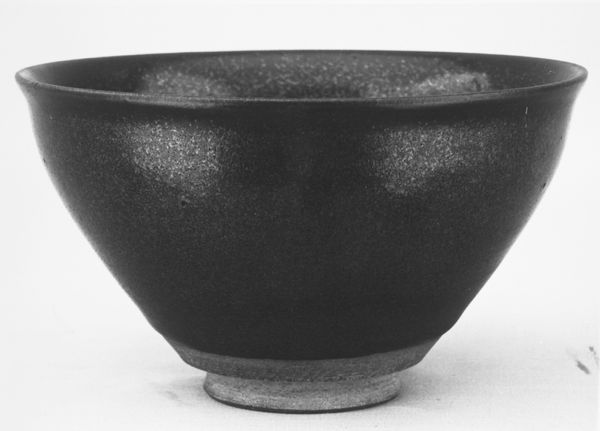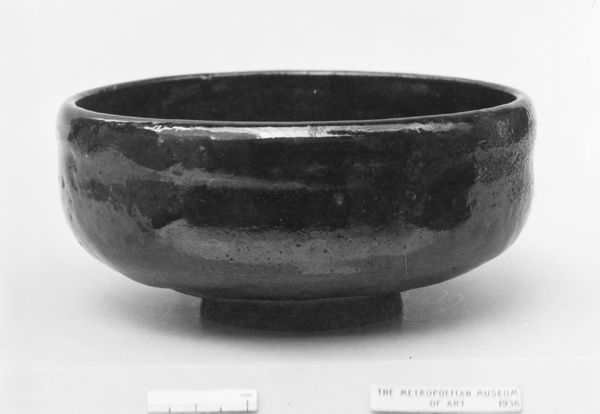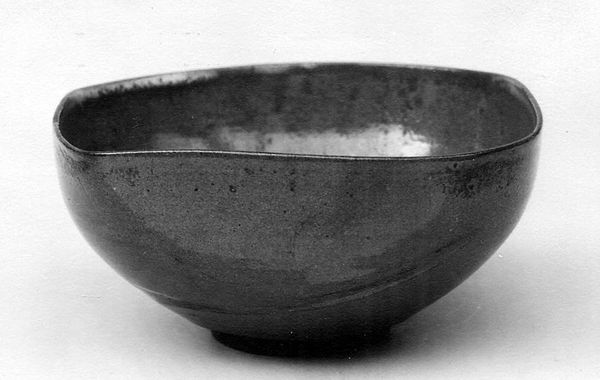
ceramic
#
asian-art
#
ceramic
Dimensions: H. 1 7/8 in. (4.8 cm); Diam. 5 in. (12.7 cm); Diam. of foot 2 in. (5.1 cm)
Copyright: Public Domain
Curator: Allow me to introduce you to an 18th-century teabowl by Nonomura Ninsei, currently residing at the Metropolitan Museum of Art. This exquisite example of Asian art is rendered in ceramic. Editor: Immediately striking is its austerity. The deep, monochromatic glaze is interrupted only by a delicate, meandering white band. There's a certain Wabi-sabi aesthetic at play. Curator: Indeed. Ninsei's work, particularly his teabowls, often showcases a profound appreciation for simplicity and imperfection, reflecting the Zen Buddhist principles embraced in the tea ceremony. The glaze itself offers a palpable textural interest; its semiotic intent perhaps evokes earthy rawness. Editor: I’d wager its value is amplified by that austerity and the social weight that Asian art bears historically and now. Did its intended use, the tea ceremony, for instance, influence the overall aesthetic and its perceived social purpose? Curator: Undeniably. The tea ceremony itself is steeped in rituals designed to foster harmony, respect, and purity, which this teabowl so poignantly mirrors. This artwork also serves as a powerful tool for the dissemination of these values through art patronage. Editor: It's tempting to see the contrast of white against that deep background as almost… combative, disrupting, rather than unifying. Is there discourse about that tension in academic circles? Curator: There's compelling dialogue regarding the role of "discord" in artistic expression within similar periods. A tension, perhaps not combative, but dynamic; like the Yin and Yang forces. Such dialectics invite close reading of how societal tensions were artistically codified. Editor: In that case, perhaps this small teabowl encapsulates a complex, coded relationship between art, socio-cultural values, and… well, something utterly and unquantifiably human. Curator: Yes, this highlights precisely the enduring relevance of an 18th-century ceramic vessel. Its appeal, undoubtedly multifaceted, stimulates discussions across aesthetic, material and philosophical levels, a confluence of cultural markers, to provide this artwork an enduring position in modern discourse.
Comments
No comments
Be the first to comment and join the conversation on the ultimate creative platform.
